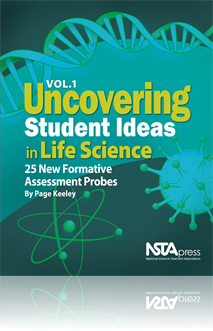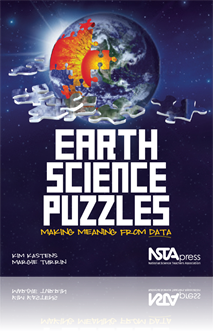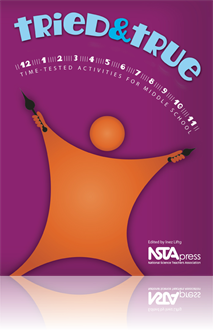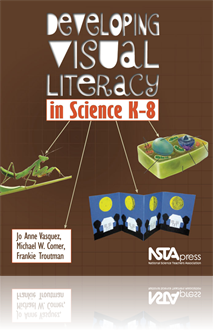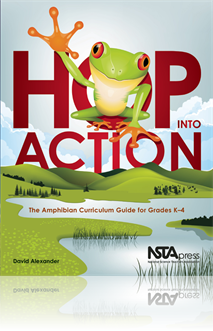All Book Chapters
Book Chapter
The purpose of this assessment probe is to elicit students’ ideas about a scientific word they frequently encounter in middle and high school science, chlorophyll. The probe is designed to reveal whether students know that chlorophyll is more th...
Book Chapter
Book Chapter
Research-Based Techniques Incorporated Within Mastery Learning
This chapter begins with a brief explanation of cognition and how we learn. This explanation will serve as the foundation for understanding why the various aspects of mastery learning have the impact that they do. ...
Book Chapter
Practical Implications of Mastery Learning
The research supports the belief that mastery learning results in improved student learning and motivation. But how do you actually do it? What are the implications of revamping a course to make it a mastery learning course? How do you handle the det...
Book Chapter
How Mastery Learning Might Look
In this chapter, the author describes what their mastery learning classroom looks like and presents several variations that could be used to make mastery learning fit specific circumstances or people....
Book Chapter
It’s very daunting to consider completely changing the way your classroom is run. The author went back and forth many times in the month before school started before making the switch to mastery learning. The author knew my students would benefit, ...
Book Chapter
The key to mastery learning is that students are required to show mastery of a concept before they are allowed to move on to the next concept. The teacher determines at what level the mastery must be accomplished—for example, 100%, 80%, or 70%. Stu...
Book Chapter
How Do We Know What the Climate Was Like in the Past?
In this Data Puzzle, students interpret a multiparameter graph of pollen data from a sediment core collected in the northeastern United States to assess changes that occurred in the tree community over a period of about 7,000 years. By comparing the ...
Book Chapter
How Do We Decide ''Weather'' Or Not To Proceed With a Trip?
In this Data Puzzle, students will observe how temperature, dew point, pressure, and wind direction change over time, and they will interpret this suite of related changes as due to the passage of a cold front. They will recognize relationships among...
Book Chapter
What Does an Earthquake Feel Like?
In this Data Puzzle, students examine real newspaper accounts of the August 10, 1884, earthquake in the northeastern United States and gain firsthand experience applying the Modified Mercalli Intensity Scale to the event. Students gain insight into ...
Book Chapter
Is the Hudson River Too Salty to Drink?
In this puzzle, students examine three different sets of salinity data collected from the Hudson River estuary in New York. The puzzle includes data collected along the length of the estuary on the same date; data collected over a span of days that...
Book Chapter
In this Data Puzzle, students calculate the amount of precipitation that fell in a watershed over the course of one year and the amount of water that exited from that watershed via the outflow stream. They then compare these two values and draw on th...
Book Chapter
How Much Heat is Released by a Seafloor Hydrothermal Vent?
In this Data Puzzle, students compare the amount of heat given off by a hydrothermal vent with the amount of heat needed to bring a kettle of water up to boiling temperature. Recognizing that the heat released from one vent in an hour would heat a cu...
Book Chapter
How the Brain Visually Perceives the World
These classic activities explore how our eyes and brain receive and process visual information. Each activity requires approximately five minutes. For a richer experience with these activities, consult a neuroanatomy guide with labeled images of the ...
Book Chapter
As students try out visual literacy tools, they will begin to “see” concepts and build relationships among ideas by layering new information onto existing knowledge. This chapter is an overview of the concept of visual literacy and of the skill ...
Book Chapter
A single still photographic image can easily communicate a vast amount of information. A photograph can capture the meaning of a complex idea or concept that would require many pages of text to describe. This chapter provides you with strategies and...
Book Chapter
Students encounter a variety of diagrams in their lives that convey a variety of scientific and technical information. This chapter reviews the skills and techniques necessary for analyzing and interpreting diagrams of several levels of complexity. ...
Book Chapter
Creating Visual Thinking Tools
When we help students discover tools and techniques for organizing the vast amount of information presented to them, they will be much better prepared to recall, retell, or make meaning from text. In this chapter, the authors examine brainstorm webs...
Book Chapter
Three-Dimensional Graphic Organizers ("Foldables")
A foldable is a three-dimensional graphic organizer that allows learners to record and process new words and concepts in a hands-on, kinesthetic way. It helps increase students’ visual-spatial learning, which research has shown to be critical to lo...
Book Chapter
Visual Literacy in Life Science: Insect Metamorphosis
The authors invite you to come with them on a learning journey. Chapters 6, 7, and 8 are designed to help you practice your visual literacy teaching strategies. Even though each of these chapters follows the same format, each one addresses a differen...
Book Chapter
Visual Literacy in Physical Science: Force and Motion
Chapters 6, 7, and 8 are practice chapters. Each chapter provides the appropriate content standards for grades K-4 and 5-8 and several partial lessons and each follows the same format but addresses a different content area. This chapter addresses phy...
Book Chapter
In this chapter the authors show that “being literate” is no longer limited to reading and writing. Literacy has come to include much more, including the ability to access, analyze, evaluate, and communicate in a variety of forms. Visual literac...
Book Chapter
Understanding Force and Motion
The objects will not change position from their initial rest positions because the downward force on each side of the pulley (ignoring the weight of the string) is the same and the net force on each side of the pulley is zero. The gravitational attra...
Book Chapter
Understanding Floating and Sinking
Predict, Observe, Explain (POE) sequences provide an important way to enhance students' understanding of important scientific ideas. In this chapter, the series of experiments help students understand floating and sinking. The experiments include co...
Book Chapter
Predict, Observe, Explain (POE) sequences provide an important way to enhance students' understanding of important scientific ideas. In this chapter, the series of experiments help students understand solutions. The experiments include concepts such...
Book Chapter
Understanding Chemical Changes
Predict, Observe, Explain (POE) sequences provide an important way to enhance students' understanding of important scientific ideas. In this chapter, the series of experiments help students understand chemical changes. The experiments include concep...
Book Chapter
Predict, Observe, Explain (POE) sequences provide an important way to enhance students' understanding of important scientific ideas. In this chapter, the series of experiments help students understand living things. The experiments include concepts ...
Book Chapter
Understanding Life Processes in Plants
Predict, Observe, Explain (POE) sequences provide an important way to enhance students' understanding of important scientific ideas. In this chapter, the series of experiments help students understand life processes in plants. The experiments includ...
Book Chapter
Understanding Interactions of Living Things
Predict, Observe, Explain (POE) sequences provide an important way to enhance students' understanding of important scientific ideas. In this chapter, the series of experiments help students understand interactions of living things. The experiments i...
Book Chapter
Understanding Temperature and Heat
Predict, Observe, Explain (POE) sequences provide an important way to enhance students' understanding of important scientific ideas. In this chapter, the series of experiments help students understand temperature and heat. The experiments include con...
Book Chapter
Predict, Observe, Explain (POE) sequences provide an important way to enhance students' understanding of important scientific ideas. In this chapter, the series of experiments help students understand heat travel. The experiments include concepts su...
Book Chapter
Understanding Static Electricity and Magnetism
Predict, Observe, Explain (POE) sequences provide an important way to enhance students' understanding of important scientific ideas. In this chapter, the series of experiments help students understand static electricity and magnetism. The experiments...
Book Chapter
Understanding Current Electricity
Predict, Observe, Explain (POE) sequences provide an important way to enhance students' understanding of important scientific ideas. In this chapter, the series of experiments help students understand current electricity. The experiments include conc...
Book Chapter
Predict, Observe, Explain (POE) sequences provide an important way to enhance students' understanding of important scientific ideas. In this chapter, the series of experiments help students understand pressure. The experiments include concepts such a...
Book Chapter
Predict, Observe, Explain (POE) sequences provide an important way to enhance students' understanding of important scientific ideas. In this chapter, the series of experiments help students understand work and energy. The experiments include concepts...
Book Chapter
Predict, Observe, Explain (POE) sequences provide an important way to enhance students' understanding of important scientific ideas. In this chapter, the series of experiments help students understand light. The experiments include concepts such as ...
Book Chapter
Predict, Observe, Explain (POE) sequences provide an important way to enhance students' understanding of important scientific ideas. In this chapter, the series of experiments help students understand sound. The experiments include concepts such as ...
Book Chapter
In this lesson, students in grades K-2 will observe and discuss the characteristics of an amphibian and students in grades 3-4 will also collect and analyze data based on their observations. The objectives are to help students identify the physical c...
Book Chapter
In this lesson, students analyze the health of a pond through physical and biological analysis. The objectives are for students to be able to determine the health of a frog pond through investigation and inquiry and to describe macroscopic organisms ...
Book Chapter
In this lesson, students listen, imitate, and identify the calls of frogs and toads. The objectives are for students to be able to recognize and identify the calls and to explain that frogs and toads call to communicate....



